Cameras On Board The Titanic Captured What Its Final Days Were Really Like
Almost everyone knows about the tragic story about the sinking of the world's largest "unsinkable" ship. The legend of the RMS Titanic has lived on in books, television, and of course, everyone's favorite James Cameron 1997 blockbuster film. The facts and history of the Titanic also live on in photos from on board the ship. Photography at the time was expensive and rare, but what better place to have a photographer than the world's first luxury ocean liner?
From the first-class cabins fit for a queen to a rare view of life in the boiler rooms, these photos from on board show what life was really like on board the RMS Titanic and make the tragedy even more horrifying.
The Titanic We All Know
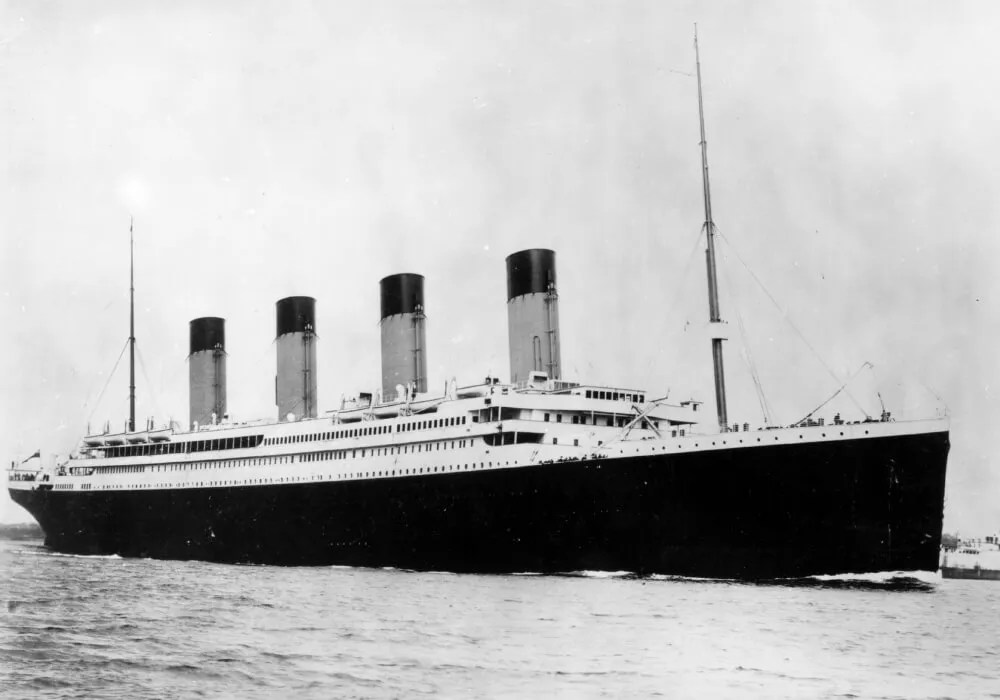
The name Titanic came from Greek mythology and literally meant "gigantic." This photo makes it clear just how large it was. The Titanic set sail on April 10, 1912, with more than 2000 people on board.
The building of the ship had been well-publicized. The $7,500,000 price tag also helped keep people talking about it. The size, technical innovations, and impressive features on board the ocean liner made everyone in the world buzz with excitement.
The Discovery Which Sparked Our Curiosity
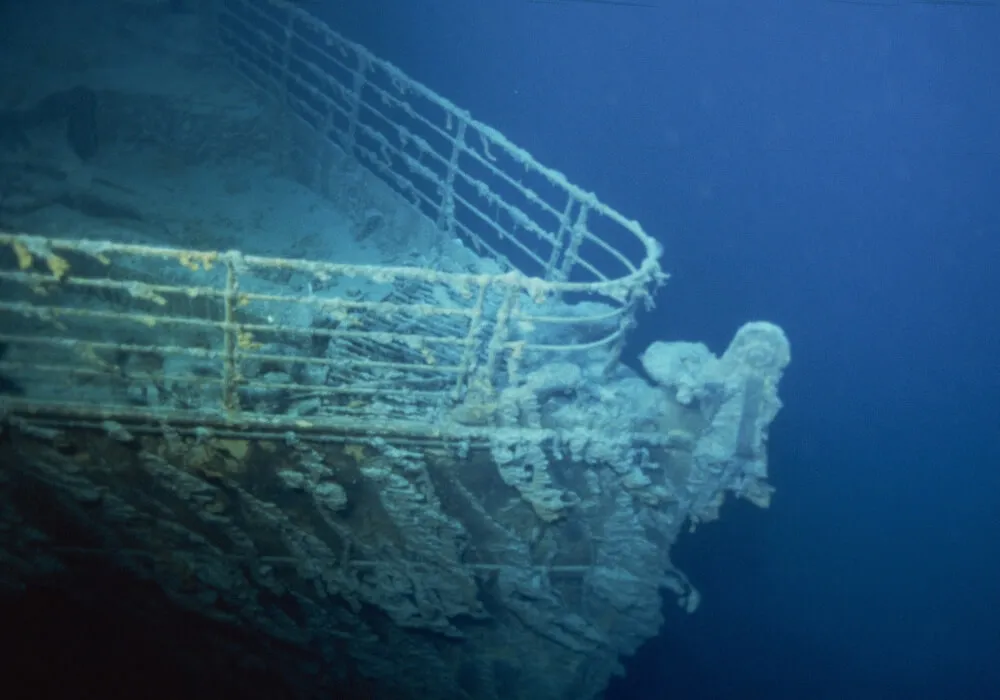
Sadly, the Titanic sank only four days into its maiden voyage after colliding with an iceberg. Most people know the fictional story of Jack and Rose from the film Titanic, but what was life really like?
Being on board the RMS Titanic was a luxury if you were first-class, but a horrifying experience for the third-class. Read on to see what life was like for the 325 first-class, 284 second-class, and the 709 third-class passengers.
The Music Truly Never Stopped

The old legend that the band never stopped playing while the RMS Titanic sank is very much true. Knowing they'd eventually perish makes it even more horrifying to see the band playing on a normal evening.
Little did these musicians know that they would play until their last breath in just a few days. The eight-member band was led by Wallace Hartley, and it was his choice to play the night away to keep the passengers calm.
The Iconic Staircase
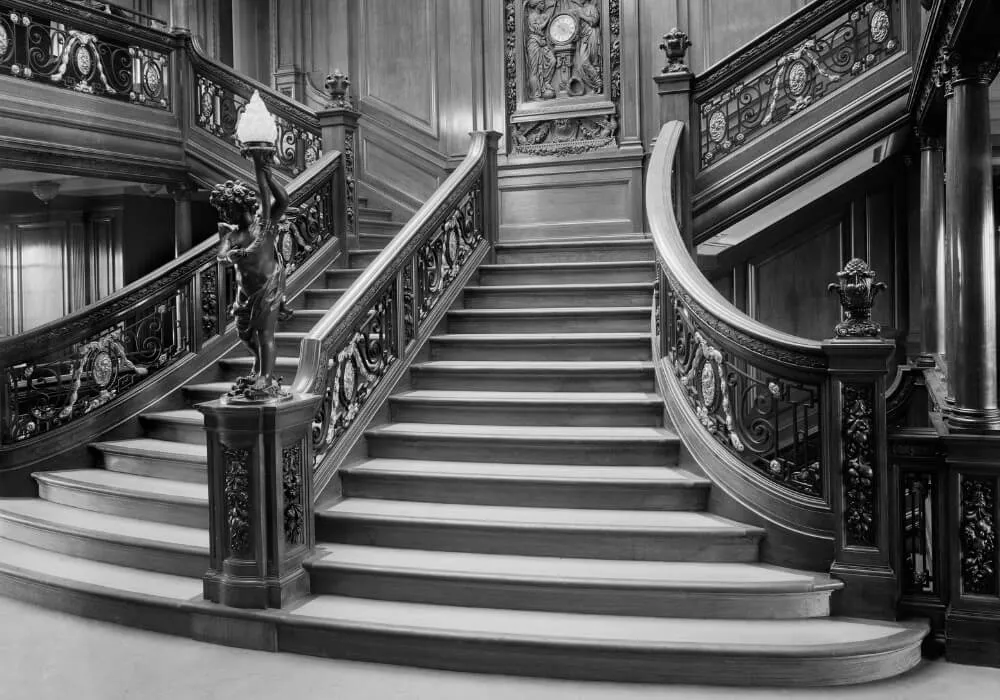
It's understandable if you think this staircase looks straight out of the film Titanic. The Grand Staircase was the main throughway between multiple decks and has become one of the most recognizable parts of the ship.
This portion of the staircase was only used by the first-class passengers, but even third-class passengers could get a rare glimpse of it. The stairway was meant to make people stop and stare, as the builders intended it to be the 'pièce de resistance' of the ship.
An Old Timey Gym To Help You Get Your Sea Legs

It might be shocking to see that among the many other features on the Titanic, it also had a small gymnasium with dated fitness equipment. The gymnasium included an electric camel, electric horse, and cycling machines. Unsurprisingly, only the first-class passengers could use the innovative facility.
The gym was open for ladies from 9 am to noon, and for men between 2 and 6 pm. It's a good thing this guy was practicing his rowing skills because little did he know, he would soon need them.
They Had A Deck Devoted Entirely To Games
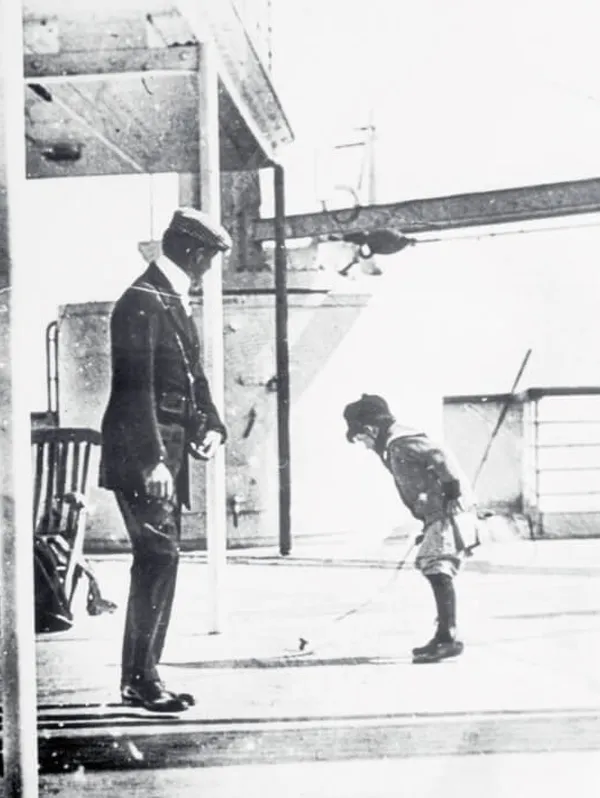
A lot of what many people know about the Titanic involves the entertainment for adults, but what about the kids? 126 children were on board the Titanic and sadly, 60 did not survive the sinking. A majority of those were in the second and third class.
This little boy here is see passing time by playing shuffleboard on the Promenade Deck. First-class children could also pass the time at the gymnasium between 1 and 3 pm.
A First-Class Lavish Lounge
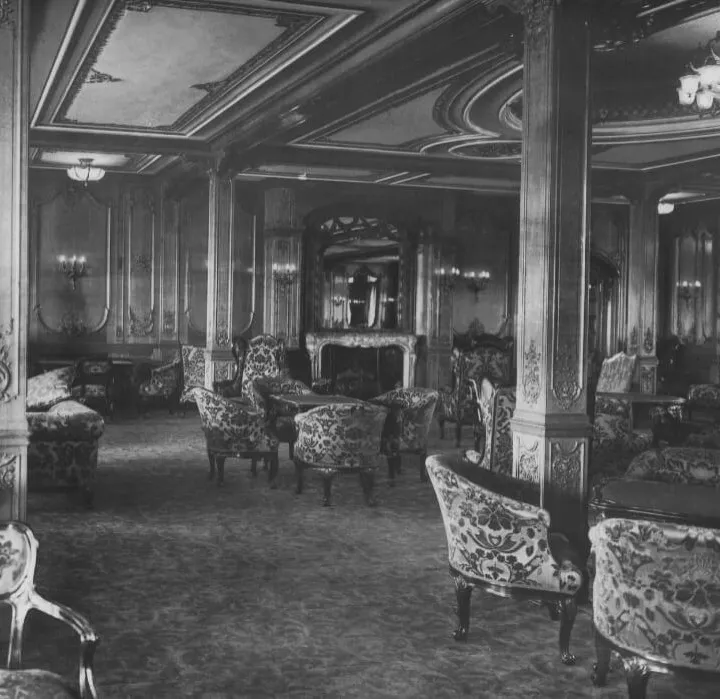
Here you can see just how outlandish and ornate the decor was in the first-class lounge. Located on Deck A, this smoking and social lounge would have been a hot spot for lunch, card games, and even business affairs.
A first-class ticket would have cost $1700 today, so they definitely got their money's worth. The lounge was styled to look like the Palace of Versailles in France. It was in this lounge that the band began playing their final notes.
There Were Two Separate Barber Shops On Board
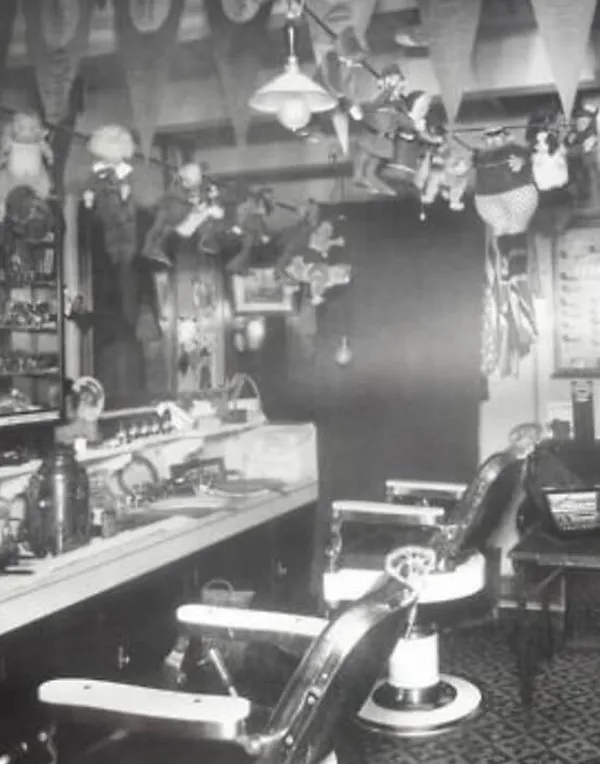
The Titanic boasted not one, but two, barber shops on board. These barbers mostly provided daily trimmings to men's facial hair. One barber was solely for first-class passengers, while the other barber was for second-class. If you were third-class, you would have to go the entire trip without a trim.
The barber shop was also kind of like a modern-day souvenir shop. You can see dolls, hats, ribbons, trinkets, and tobacco hanging up on the walls for sale.
Café Parisien Was The Go-To Spot For Tea Time
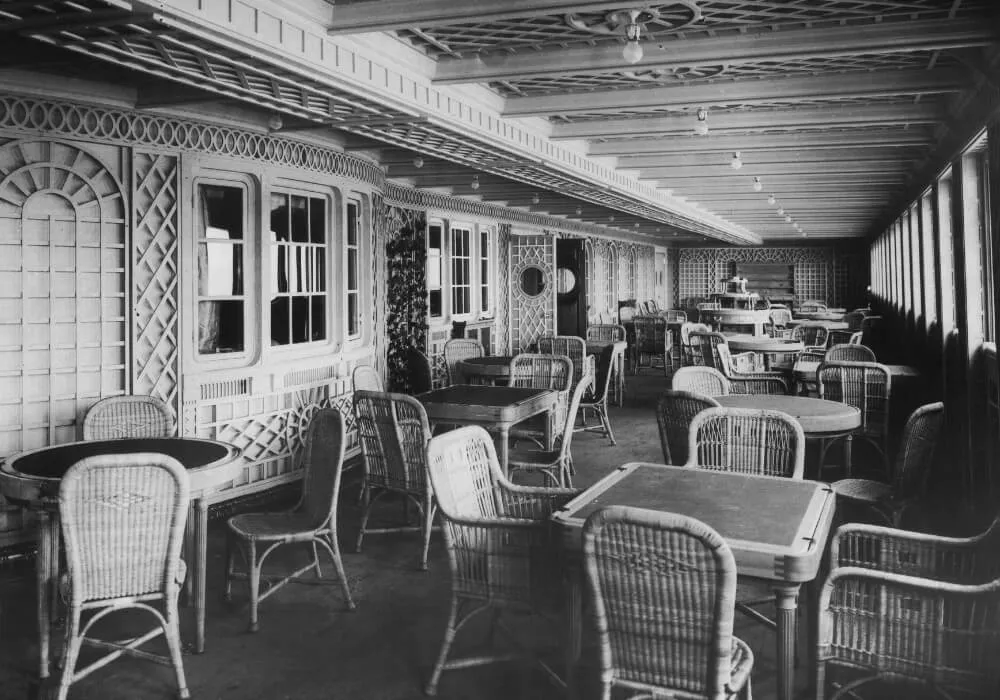
If you didn't want to spend your days at the indoor lounge, you could drink and socialize at the Café Parisien, which overlooked the Atlantic Ocean. It was the first of its kind on an ocean liner. The Café was most popular with the younger first-class crowd instead of a stuffy parlor.
The Café Parisien was the first restaurant of its kind on an ocean liner and served food like oysters, salmon, roast duckling, and vanilla éclairs.
A First-Class Cabin Was Like A Dream
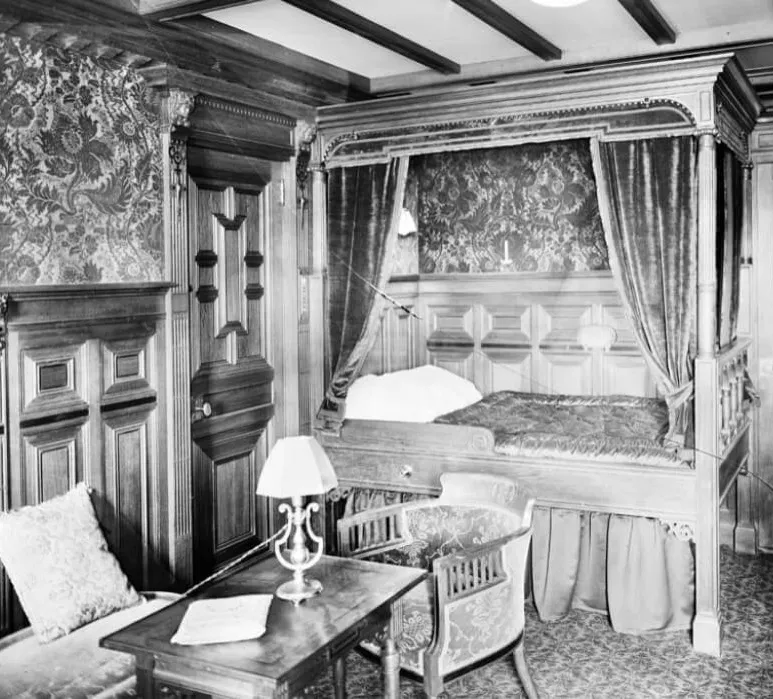
This glimpse into the luxurious first-class sleeping cabin is a nicer bedroom than most other passengers could ever dream of. One set of staterooms were so elite that they were connected by a private deck. It was these ultra-private staterooms which were recreated for the film Titanic.
The first-class cabins were all located on the B Deck. Sadly, the B Deck is where most of the crew and passengers who could not escape the ship would take their last stand as it sank.
Second-Class Cabins Were Comfortable Enough
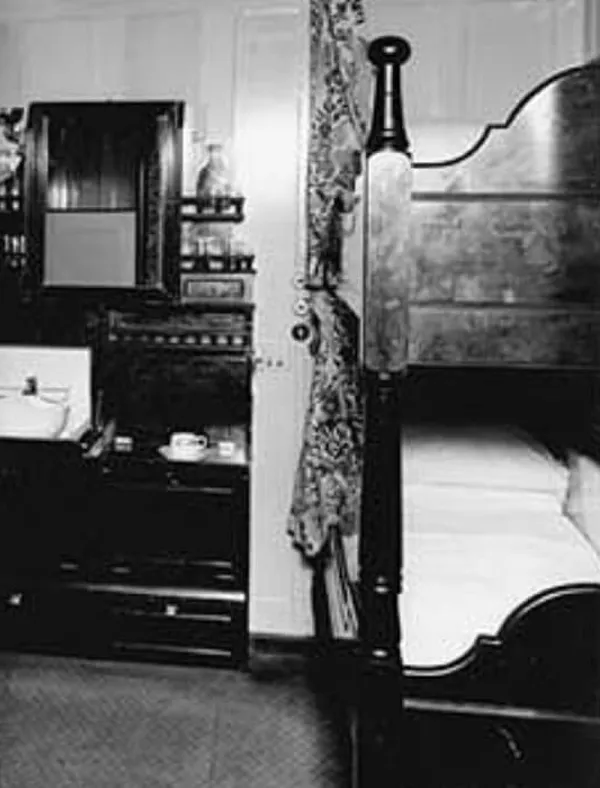
The bunks, private bathrooms, and a seating area in the second-class cabins were more than enough for many. There were even select second-class cabins that could double as first-class cabins, which meant they were more lavish.
A cabin like this could have been as high up at the C Deck, and as low down as the E Deck. Many people think that second-class passengers had it better than third-class, but many did not escape death either.
Third-Class Cabins Were Hardly Inviting
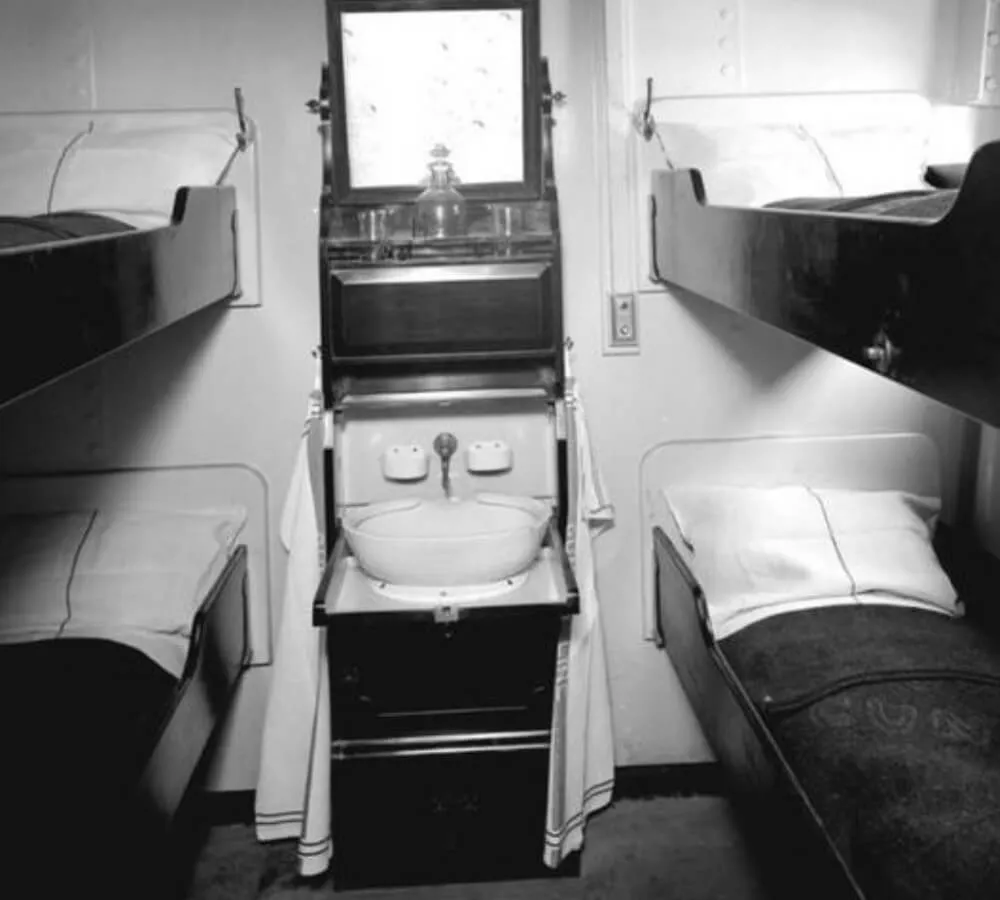
The third-class cabins were more like a jail cell than sleeping quarters. Thanks to the cramped space, most of the third class passengers spent time elsewhere on the ship. The cabins were located on F Deck and G Deck, which were some of the first to flood.
It also didn't help that the Titanic began sinking in the early hours of the morning when most third-class passengers had already gone to bed, making their escape even harder.
The Third-Class Dining Area Was More Like A Cafeteria
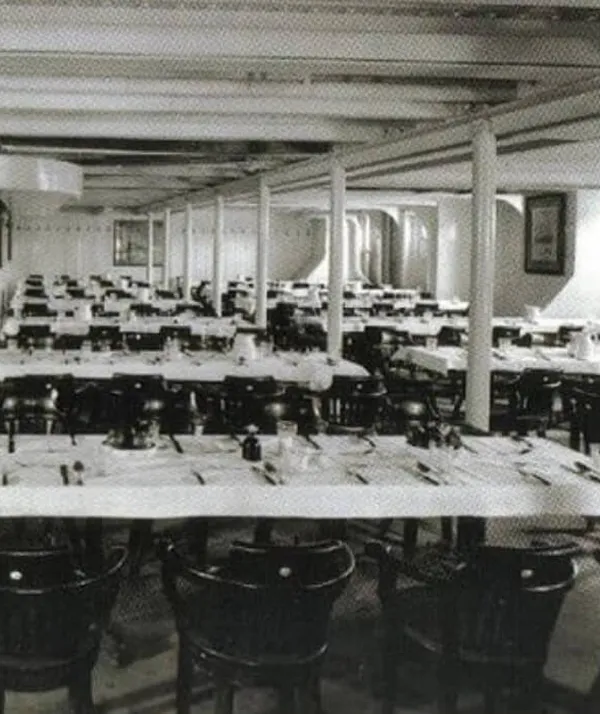
The third-class dining area was hardly inviting. It was more of a cafeteria-style room that left more to the imagination. Still, the silverware and table settings were likely the fanciest many third-class passengers had ever encountered. Dining with some of the finest silverware would be a highlight for many passengers who did not survive the sinking.
In the dining room, third-class passengers were served basic meals like porridge, vegetable stew, baked potatoes, and occasionally, roast beef.
The Second-Class Social Lounge Was More Than Enough
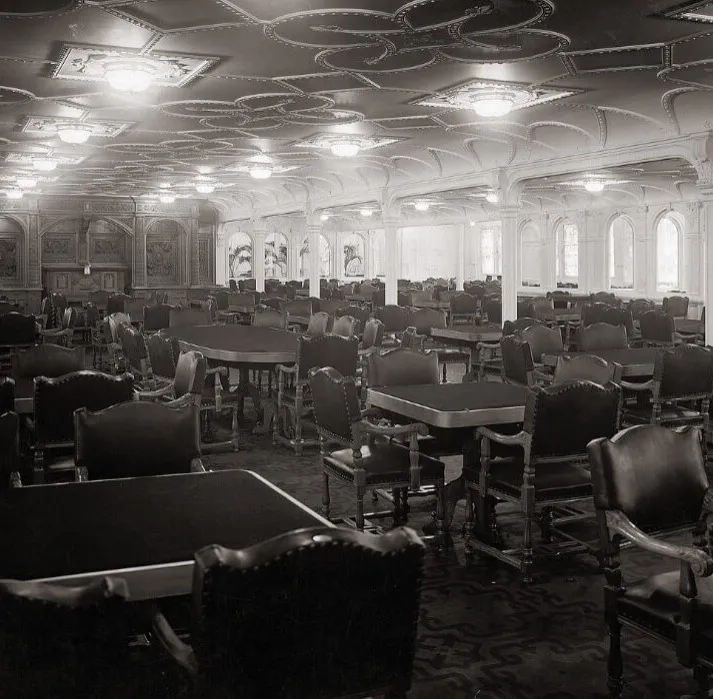
If you didn't know it, you might assume that this room was home to the first-class of passengers. No, even upholstered chairs and lavish ceilings weren't fancy enough for the first-class. Much like the first-class lounge, it was styled after the lavish Palace of Versailles, but the designer left the more ornate fixings for first-class.
This second-class social lounge was where many played cards, and some rogue third-class members would try and sneak their way into.
A Rare Image Of What The Boiler Rooms Were Like
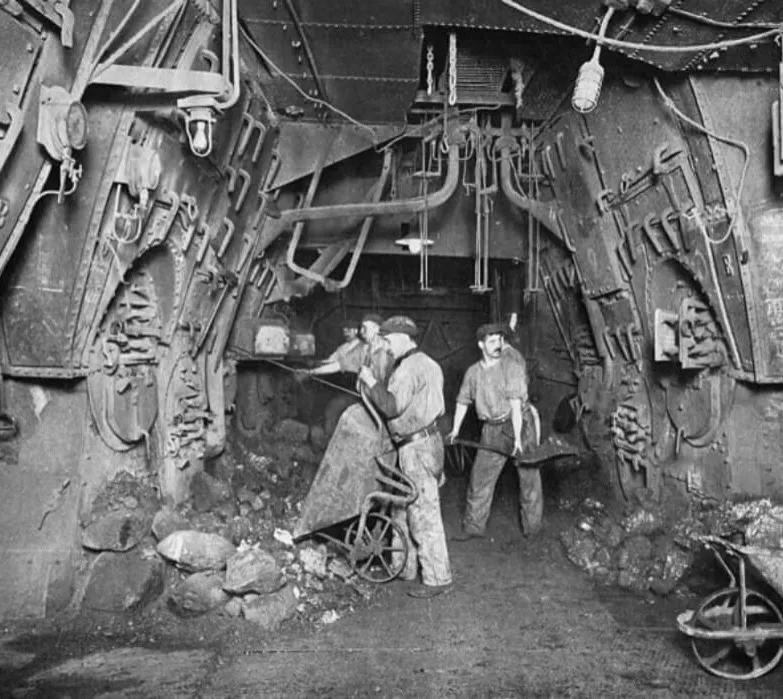
Here you can see what the reality was like for those who worked in the Titanic's boiler rooms. Keeping the ship moving was a 24/7 job that was dirty and harsh. There were six boiler rooms that held 29 boilers. 179 men worked round the clock to fuel the boilers with 600 tonnes of coal every single day.
These workers were paid well, but none escaped. The boiler rooms were some of the first to be flooded when the ship hit an iceberg.
The Ship Even Had Saleswomen On Board
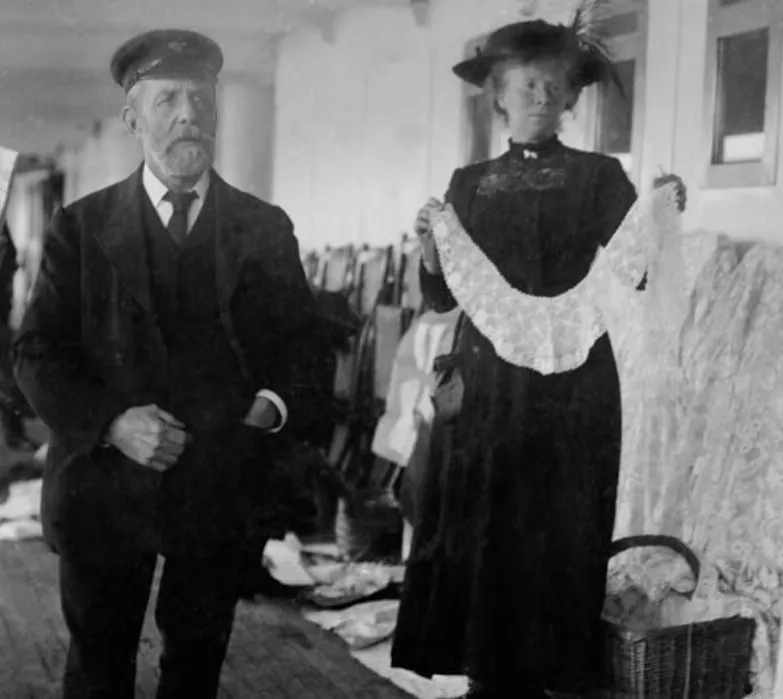
Here, an Irish woman sells lace on board a second-class deck. There was no protocol on the Titanic that said your luggage couldn't be full of goods to sell on board. For many people who resorted to a life of sales, buying a ticket on the Titanic would have been a gamble they were willing to take.
This woman was likely hoping that the profits made on the trip would help fund a new life for her in America.
The Decks Were Always Kept In Pristine Shape
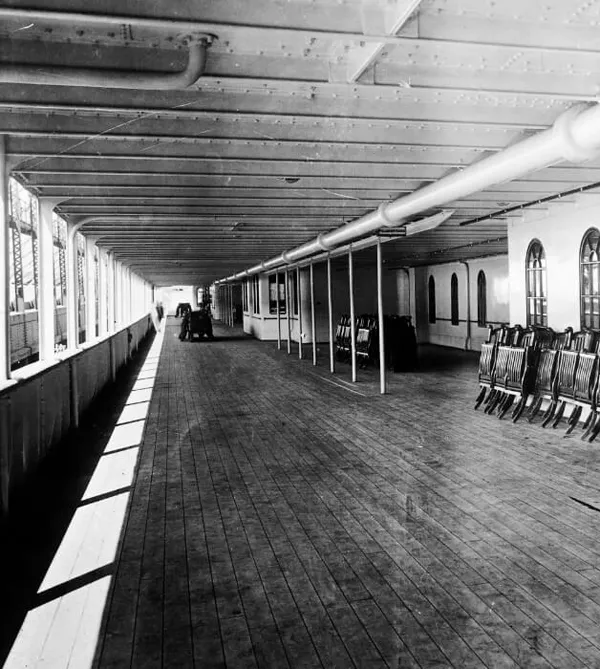
There were four decks from A Deck to D Deck that were above water and could be enjoyed by the passengers. Every deck was kept in tip-top condition by the crew no matter which class inhabited them. This was because each deck was partitioned off, rather than having full separate decks for each class.
For your average third-class passenger, the attention to detail on everything, including your lower-class deck, probably made the Titanic voyage feel like a dream.
Loading Luggage On Board Was A Sight Itself
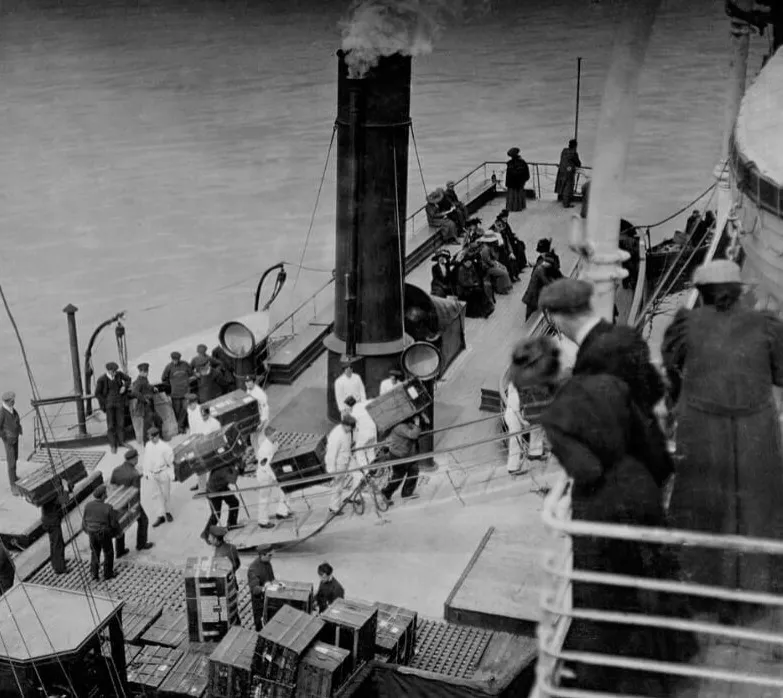
This image of a secondary ship transporting luggage onto the Titanic was one of the first taken on board. You can see some passengers watching on eagerly to see their personal belongings brought on. Little did they know, those belongings would end up in the deep depths of the ocean in just a few days.
On other ocean liners, passengers brought their own luggage on board. The Titanic revolutionized cruise ship service by employing workers to do this simple job for the passengers.
The Sheer Size Of The Propellers Show The Might Of The Titanic
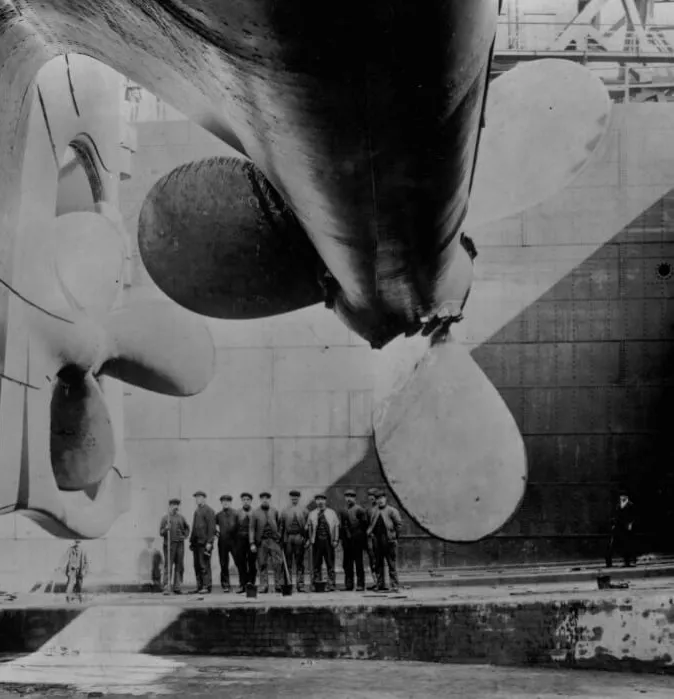
The Titanic's propellers were a staggering size. Three propellers graced the back of the Titanic, and both side propellers were 23 feet across and weighed a staggering 38 tonnes each.
With that size and weight, these propellers are actually the largest to ever be built, even larger than ones used on ships today. The people in the background show just how hefty they really were. It's hard to believe a ship with so much power could sink so quickly in the night.
The Propellers Today Tell A Story
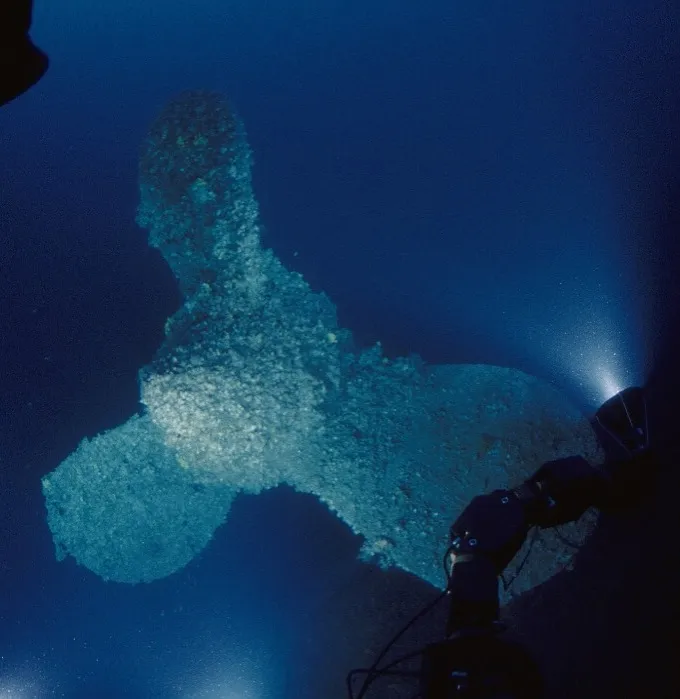
The search of the Titanic today uncovered many items left behind, but nothing was more impressive than one of those staggeringly large propellers. It has survived under the water for more than a century and with its size and shape, it is still easily recognizable.
Items like the lounge chairs, bags, and fitness equipment are nowhere to be found in the wreckage site, and ocean currents could have taken the items thousands of miles away.
The Reading Room Was A Much Needed Escape

The first-class reading and writing room seen here was built as a place for the ladies to "retreat" to following their dinner. The designer of the ship even decorated the room with pink curtains to make it feel more feminine.
After the first night of the voyage, it became clear this room was quite honestly useless. Most women remained at their dinner tables socializing when their husbands left. The designer saw it getting no use and planned to leave it out for his next ship design.
The Topmost Deck Had Quite A Breeze
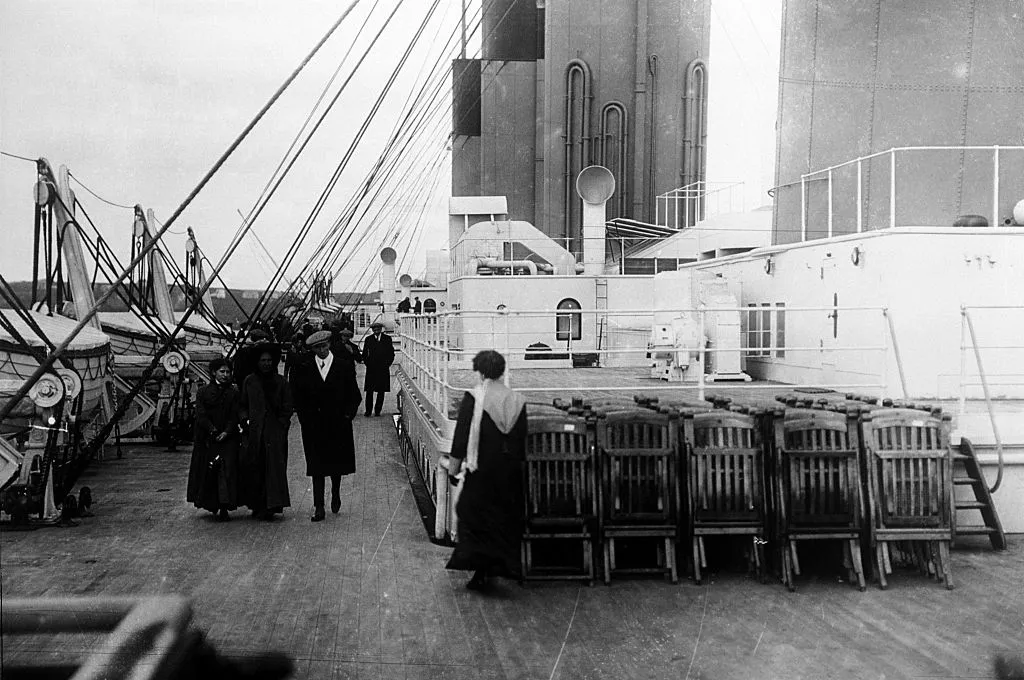
The top deck of the ship, also known as the Boat Deck because it's where the lifeboats were held, was the only deck fully open to the elements. It was segregated into four sections: for officers, for engineers, for first-class, and for second-class passengers.
Third-class passengers weren't allowed on any part of the Boat Deck. For movie nerds, that means Jack never would have been able to be "king of the world!" on the edge of the boat deck.
The Indoor Swimming Pool Was The Last Room To Flood

Despite being surrounded by water, the Titanic was one of the first ocean liners to feature a swimming pool on board. It wasn't like the pools you see on cruise ships today though. The pool was part of the gymnasium and Turkish bath complex for first-class passengers.
The pool contained salted sea water that was heated for relaxation purposes. Famously, the waterproofing of the swimming pool room meant it was the last area of the ship to flood.
Teatime Was The Social Event Of The Day
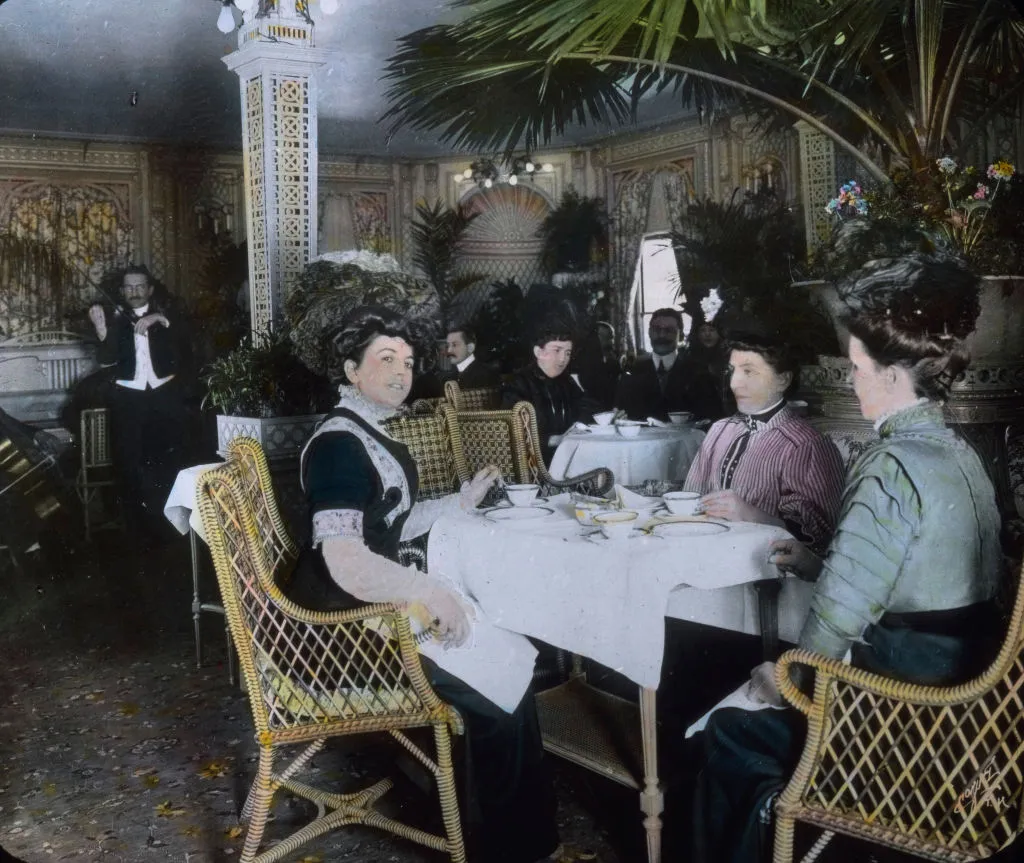
This stunning colorized photo shows ladies enjoying their afternoon tea while the band plays in the background. Buttered toast and small sandwiches were served and could tide the ladies over before dinner.
It was also one of the places onboard that served liqueurs and alcohols as early as 8 am. The first-class teatime parlor boasted a long list of liqueurs from chocolate to fruit flavors. Movie-goers would notice the room as the place where the women discuss Rose's wedding plans.
Even The Staircases Between Decks Were Lavish

As a third-class passenger, you didn't need to visit the Grand Staircase to feel like everywhere you went was lavish. As shown here, the green velvet carpet covering dark oak staircases was a picture of wealth. Even down in the third-class decks, this is how the Titanic was decorated.
The only area of the ship that didn't lend itself to decoration was the work rooms. As soon as you stepped foot towards the boilers, it was just barren metal.
A Cross Beam Shown During The Building Of The Ship

Here, a man stands beside a massive metal cross brace that would end up running through the middle of the Titanic. Construction on the largest ocean liner began on March 31, 1909, at the shipyard seen here in Belfast.
It took 26 months from the start of construction to its launch from the shipyard. Throughout the build, approximately 3,000 men were employed. From start to finish, height men tragically died primarily by falling.
A Look At The Radio Station Aboard The Titanic

This stunning colorized photo shows a young radio operator working in the radio room aboard the Titanic. On the Titanic, there was one senior radio operator, Jack Phillips, who worked during the day and took time off at night. He woke up as the ship was sinking and did send out distress signals to ships up until his final minutes.
After the sinking of the Titanic, laws were enacted that made it mandatory to have a rotating radio crew on ships so that there was always someone awake and attentive to send for help.
The Titanic's Captain Before The Ship Launch

Pictured here in June 1911, one year before the Titanic would set sail, is Captain Edward John Smith and Lord James Pirrie, Chairman of the Belfast Shipyard. Smith served as the captain of many White Star Line ships and felt honored to be chosen for the Titanic's maiden voyage.
Smith was asleep in his cabin when the Titanic struck the iceberg. While he did everything possible to get people off the ship, there are conflicting reports that he either drowned or committed suicide with a pistol.
Lifeboats On The Top Deck Of The Titanic

It is well known today that even though some lifeboats left the Titanic only half full, even at their capacity there would not have been enough to save everyone on board. There were only 20 lifeboats onboard which meant of the 2,220 passengers and crew only 1,100 would have been able to survive.
The lifeboat launcher was also proven in the disaster to be slow and often faulty. Many of the crew didn't even have training on how to launch a lifeboat.
Survivors Of The Titanic Approach The Carpathia

The first lifeboat was launched from the Titanic at 11:45 p.m. and they continued to launch until the ship capsized at 2:15 a.m. It was not until two hours later around 4 a.m. that the first lifeboat would reach the RMS Carpathia. The Carpathia rescued the final group of lifeboats at 8:30 a.m.
You can see in this photo that the lifeboat if being rowed by mostly women, which was not surprising as women and children were loaded on first.
Survivors Try To Warm Up On Deck Of The Carpathia

Here, survivors rescued from the lifeboats rest in the sun on the top deck of the RMS Carpathia. The ship was actually sailing eastward from New York when the radio operator received distress messages from the Titanic. The ships' captain immediately set course for the Titanic and arrived two hours after the ship had sunk.
Thanks to the ship and crew's rescue efforts, 712 people were saved and safely transported to their original destination, New York City.
The Carpathia's Crew Was Honored Greatly

Thanks to their selfless work in saving the Titanic survivors, the captain and crew members of the Carpathia were honored greatly. Captain Arthur Rostron and his senior crew are shown here sitting with a silver cup that was presented to them by survivors of the Titanic.
Captain Rostron later went on to be an honored guest of President Taft at the White House. There, he was presented with the Congressional Gold Medal, which is the highest honor possible.
They Saved The Lifeboats

At the time, the thirteen lifeboats that the Carpathia chose to save and board onto their ship were the only remains of the Titanic. The Carpathia brought the lifeboats back to New York where they intended to return them to the White Star Line.
Unfortunately, the lifeboats seen in wait here at Pier 59 were quickly stripped by looters and souvenir hunters. Over time, the lifeboats have been lost to history. Most people think they were either reused on other White Star Line ships, or quietly destroyed.
People Around The World Raised Funds For The Victims
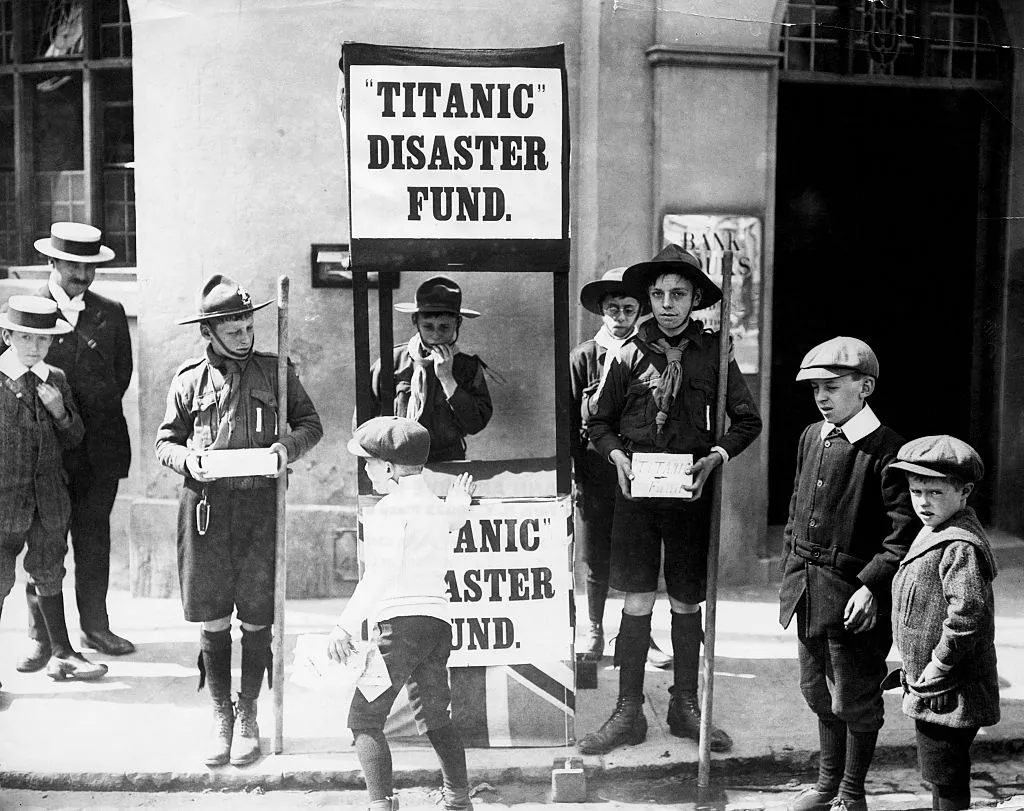
The after-effects of the Titanic's sinking wasn't just felt in England and America. The news was heard around the world and there seemed to be passengers on board from all corners of the globe.
Here, a boy scout troop in Stratford raise funds for Titanic survivors but they were not the only ones. The White Star Company which owned and built the Titanic set up a relief fund that paid thousands to the victim's families and to the survivors.
Survivors Find Refuge In New York City

Upon arrival in New York City, many survivors were left begging for help from sympathizers. While some were lucky enough to have friends or family in the city, others had to wait for financial aid to come in.
These men sit here in a makeshift shelter while they wait to receive help. Thankfully, once the shock mulled over, many in New York were sympathetic to the survivors and opened their homes to them while they waited.
A Woman Buys A Titanic Print

It didn't take long after news hit about the disaster that people began looking for ways to capitalize on the tragedy. Street markets and entrepreneurs began selling everything from figurines, postcards, and newspapers for inflated prices. Here, a woman buys a print of the Titanic not long after hearing the news.
Some were even desperate enough to loot the lifeboats. It likely paid off in their favor though as Titanic memorabilia has only increased in value.
Crowds Gather To Welcome Survivors Back To Britain
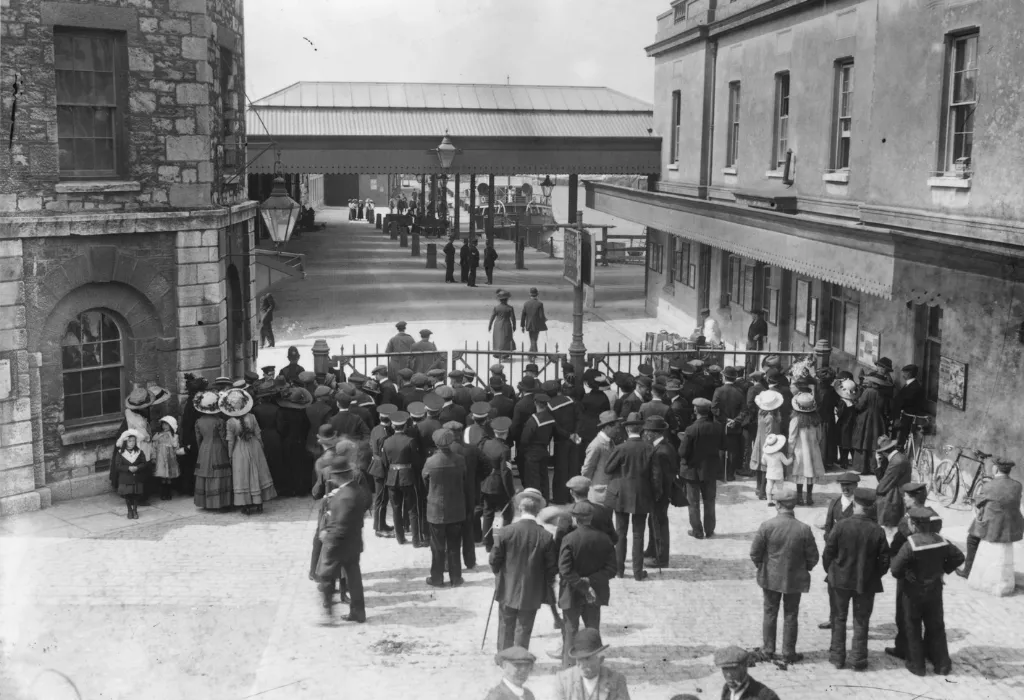
Men, women, and children gather around the gates at the Belfast shipyard. They were anxiously awaiting the RMS Lapland to dock. The Lapland was transporting 172 Titanic survivors back across the Atlantic ocean to return home.
The crowd in Belfast was nothing in comparison to the original crowds in New York City. Tens of thousands of New Yorkers gathered along the pier on April 18, 1912, to catch a glimpse of the Carpathia and the survivors.
A Man Testifies In Front Of The Inquiry Committee

It didn't take long for the public grief to turn into anger and outrage. Many quickly began to wonder how an ocean liner that was supposed to be unsinkable managed to capsize on its maiden voyage. Before the Carpathia even docked in New York, White Star Line had already begun to assemble an inquiry committee.
The committee concluded that the combined failure to listen to the iceberg warnings as well as the inadequate lifeboats was why the disaster took so many lives.
Surviving Crew Members Wait Outside The Courthouse

Here, crew members who survived the disaster wait patiently outside a courthouse while the White Star Line inquiry committee debates inside. Many survivors expected financial compensation for the ordeal.
In the end, White Star Line settled out of court with the survivors and agreed to pay out $664,000 to be split between the survivors. With more than 700 people, that worked out to around $950 per person. Adjusted for inflation, each survivor received just over $22,000.
Two Young Survivors Wait To Be Reunited With Their Mother
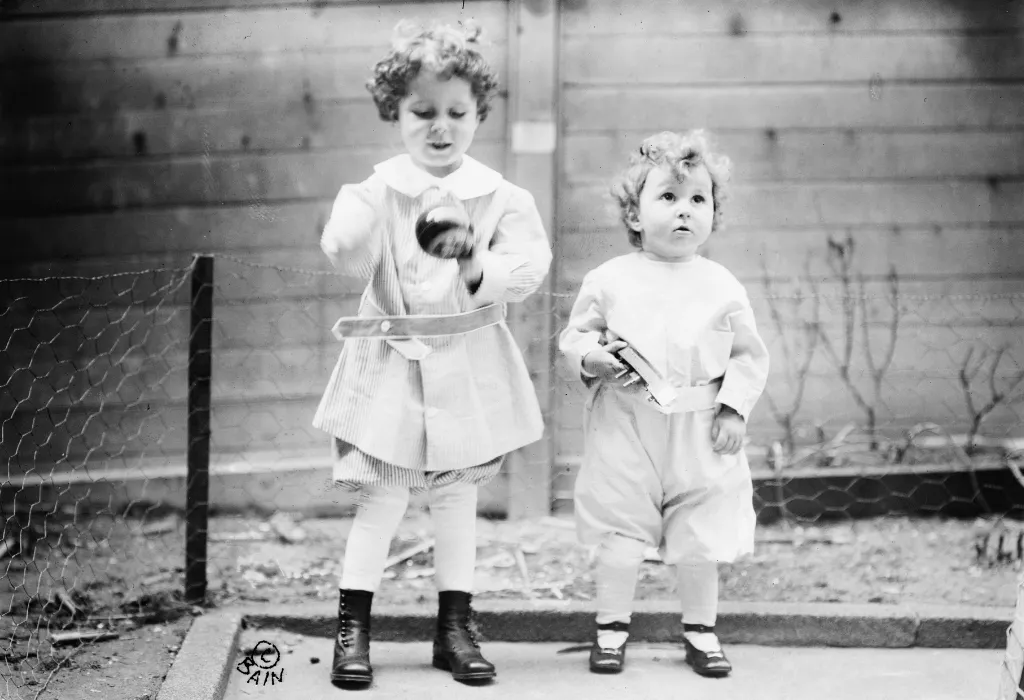
Even though they were the first in the lifeboats, sixty children did not survive the sinking of the Titanic. Two who did, Michel and Edmond Navratil, are seen here safely in New York. Sadly, their father drowned in the ocean after placing his two sons in the lifeboat.
The Navratil boys traveled second-class with their father while their mother stayed behind in France. It took weeks for them to finally be reunited but they are considered one of the Titanic success stories.









